
Strutz foot pads are simple and unobtrusive, possess a sleek, low-profile design, and serve as a sort of “mobile,” or “wearable,” metatarsal pad. This important foot health tool helps you prevent or address ball of foot pain and helps improve foot structure and function. Strutz foot pads come equipped with a wide elastic band that wraps around your foot and a built-in raised pad that is intended to be positioned in the pocket of space just behind the ball of your foot (and not under the ball of your foot). The one-size-fits-most nature of these pads means that they are incredibly accommodating and versatile, and they work great for a wide range of foot shapes and sizes.
Though Strutz foot pads are quite easy to use, there are some specific points about them that are helpful to know. This article serves as an instructional guide to help you get the very most out of your Strutz foot pads. If you have any additional questions about the pads after reading this article, please don't hesitate to contact us with them.
How to Apply Strutz Foot Pads

Each individual Strutz foot pad has, overlying its bulbous gel-foam core, a durable outer covering and a comfortable, fabric-lined inner portion. With the fabric side of the pad facing the sole of your foot and the pointed part facing your heel, slide your Strutz foot pads into position. The pad's prominence should be located just behind the ball of your foot, in the space that exists behind your metatarsal heads. No part of the pad's raised area should sit under the ball of your foot, as this could be uncomfortable and potentially worsen your condition. A small portion of the flat leading edge of the pad may end up under the ball of your foot, but this shouldn't have any negative effect on your foot comfort or function.
Once you feel that your pad is properly positioned, take a few steps to see how the pad actually feels on and beneath your foot when weight bearing. To adjust your pad, simply slide it to the position that feels most comfortable. Again, the pad should be pushing into your sole just behind the ball of your foot (which has a compensatory—and desirable—downward shifting effect on your toes). This is the location in which Strutz foot pads will provide maximum foot health benefits. A pad that's positioned too far back on your foot will be less effective, and a pad that's positioned too far forward on your foot will be uncomfortable. So, finding that optimal pad location is key.
Also, the pad's elastic band is designed to fit snugly but not be constrictive. No part of the elastic band should be positioned around the ball of your foot, as this would squeeze your metatarsal heads together and contribute to ball of foot problems associated with compressed or irritated forefoot nerves or blood vessels.
After you are satisfied with the placement of your Strutz foot pad, apply the second pad to your other/opposite foot and repeat the above process to dial in the proper positioning for it too.
SHOP STRUTZ FOOT PADS
Strutz Foot Pads Transition Period

There may be a brief “break-in” period before you feel comfortable wearing your Strutz mobile metatarsal pads for extended periods. This is true for not just Strutz foot pads, but for almost all natural footgear, as it often takes some time for the foot muscles and other tissues to “wake up” after many years of relative dormancy (i.e., most people who have worn conventional footwear have foot muscles that have not been sufficiently recruited, worked, or challenged as they should). Indeed, it can take several days to several weeks for your feet and body to properly adjust to your Strutz foot pads. In some cases, it may even take longer. This is particularly true for individuals who have worn conventional footwear, with its many design flaws, for many decades.
In our experience, we have found it best to wear Strutz foot pads for 30 minutes to 1 hour the first day, and then increase wear time by about 30 minutes per day, to tolerance. Most people find that they can, ultimately, wear the pads for most of the day, but it does require some patience and diligence to get there. A gradual, step-wise approach is the most judicious way to build foot tolerance and get the very most out of your pads.
One additional important thing to note: Strutz foot pads should not cause any foot pain or discomfort. If you feel foot discomfort after using Strutz foot pads, temporarily discontinue use to give your foot some time to rest and adapt to the changes taking place. You can then try reintroducing your pad after a few days, gradually increasing your usage if your foot discomfort does not reappear. If you still feel pain or discomfort when wearing your Strutz foot pads, please consult a natural foot health practitioner in your area to help you determine the underlying cause of the pain.
How to Use Strutz Foot Pads

Strutz foot pads can be used in several different ways, giving you ultimate versatility in how and when you use them. You can wear your pads on your bare feet, over a pair of Injinji toe socks, or within a pair of men's or women's foot-healthy footwear. Foot-healthy footwear includes shoes, boots, or sandals that are completely flat from heel to toe, widest at the ends of your toes (not just wide at the ball of your foot), and flexible in the sole. Please avoid using Strutz foot pads in tight-fitting and/or rigid-soled footwear. Doing so would be counterproductive to optimal foot and toe rehabilitation. For best results, especially when it comes to straightening crooked toes or tackling ball of foot problems, please consider using your Strutz foot pads in combination with Correct Toes toe spacers and the other helpful footgear mentioned above.
SHOP CORRECT TOES SHOP INJINJI TOE SOCKS SHOP MEN'S FOOTWEAR SHOP WOMEN'S FOOTWEAR
Strutz Foot Pads & Athletic Activity

It's important to wear your Strutz foot pads during weight-bearing activity, as this is how you will experience a significant rehabilitative effect from the device (i.e., there is little rehabilitative merit or benefit associated with wearing the pads while at rest, unless you are standing). Given the versatile nature of these pads, there are many activities for which you can use your Strutz foot pads, including (but not limited to):
- Running
- Walking
- Hiking
- Cycling
- Dancing
- Yoga
- Court sports
- Gym workouts
Using the pads for these activities will help enhance your foot comfort in addition to restoring normal and natural foot function with each and every step. Indeed, almost all athletes, regardless of age, ability, or discipline, can benefit from using Strutz foot pads to help build or preserve optimal foot health. And the more active you are, the quicker the favorable changes in foot form and function will occur.
Pedag Met Pads: Another Metatarsal Pad Option

Pedag “T-form” met pads are a more traditional type of metatarsal pad. These pads come with an adhesive backing and permanently adhere to your shoe liner or insole. While both types of metatarsal pad (Strutz and Pedag) work great, there are a few reasons you might consider going with a Pedag metatarsal pad, including:
-
If you have particularly petite or narrow feet. Pedag metatarsal pads come in several distinct sizes, and the Small size may be a better fit for petite feet than the one-size-fits-most Strutz pad.
-
If you would prefer to have the pad under your foot rather than around your foot. Most people find the elastic band of the Strutz pad to be quite comfortable, though others may prefer a band-less situation.
-
If you wear open-toe footwear on a regular basis. Most people who wear open-toe footwear prefer the less visible Pedag metatarsal pads to Strutz foot pads, due to the appearance of the elastic band encircling the foot associated with the latter.
Which metatarsal pad you select depends upon the above factors and your own personal preferences. Both options work exceptionally well to promote optimal foot form and function and rehabilitate your foot and toes.
SHOP PEDAG METATARSAL PADS
Important Considerations for Using Strutz Foot Pads

If you have diabetes, suffer from persistent chronic joint problems and foot pain, experience numbness in your feet, or have circulation problems, please consult a natural foot health practitioner before using Strutz foot pads. Approval from your health care provider is very important in ensuring an optimal experience with the pads if one or more of the above considerations applies to you.

WANT TO IMPROVE YOUR FOOT HEALTH?
Let the team at Natural Footgear help you! Subscribe to our newsletter for the latest offers and helpful info, and sign up for our FREE email courses on various topics and foot health conditions.
Sign Up →
Want to Improve Your Foot Health?
We are here to help you every step of the way. Get our newsletter for the latest offers and helpful info, and sign up for our FREE email courses on various topics and conditions, including bunions, hammertoes, neuromas, plantar fasciosis, shin splints, ingrown toenails, and more.
Sign Up →
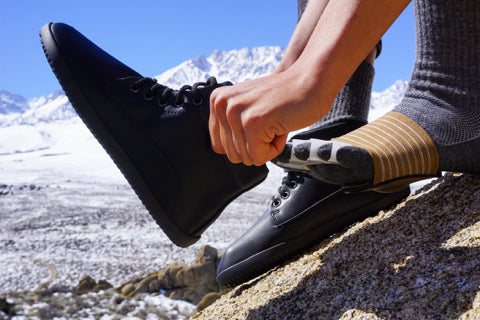 The very best foot pads are the ones that nature gave us (i.e., the ones already built into our feet), such as the forefoot fat pad and the calcaneal fat pad. But for most of us who have spent a lifetime shod, our foot pads are not properly positioned (or conditioned) to play the role they were intended to play. In order to get the “built-in” foot pads doing what...
Read more
The very best foot pads are the ones that nature gave us (i.e., the ones already built into our feet), such as the forefoot fat pad and the calcaneal fat pad. But for most of us who have spent a lifetime shod, our foot pads are not properly positioned (or conditioned) to play the role they were intended to play. In order to get the “built-in” foot pads doing what...
Read more









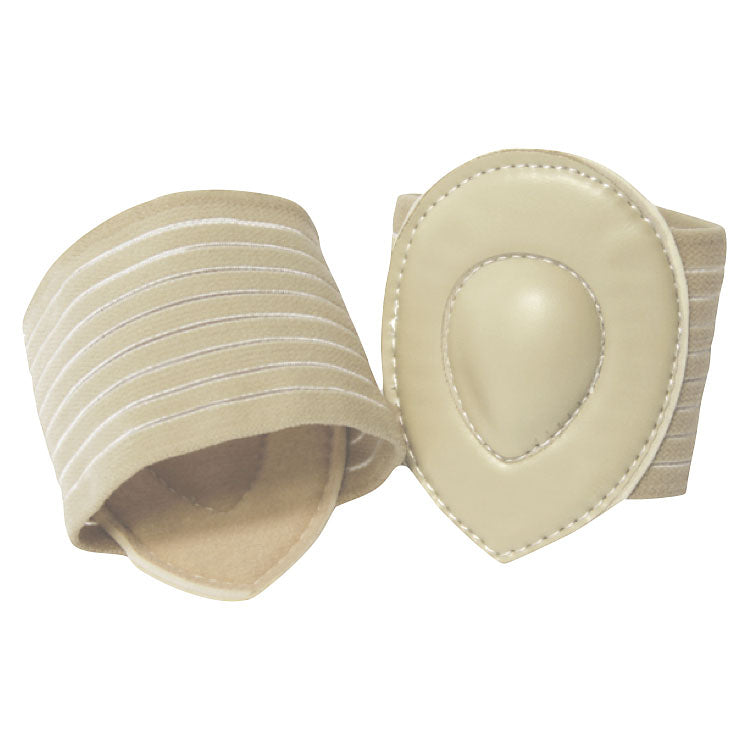
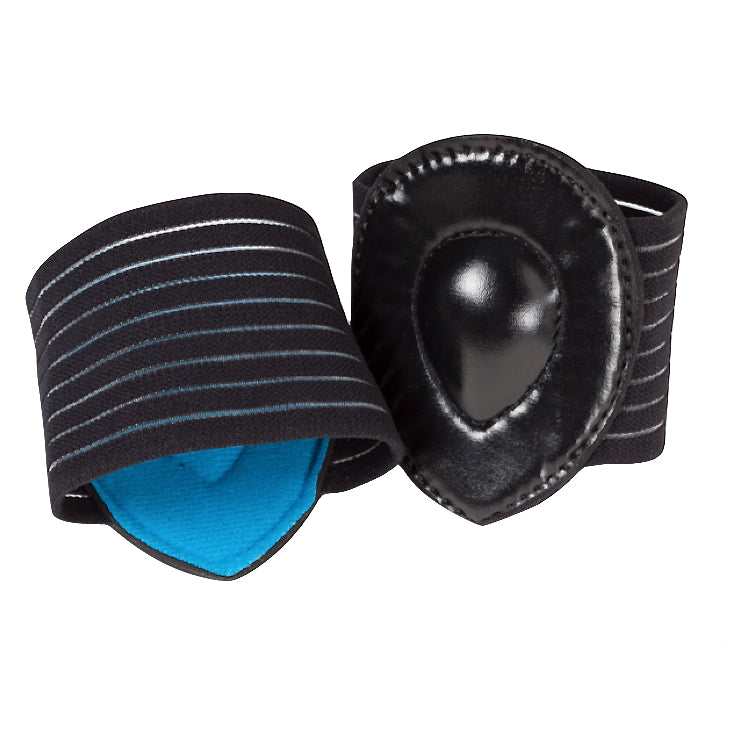
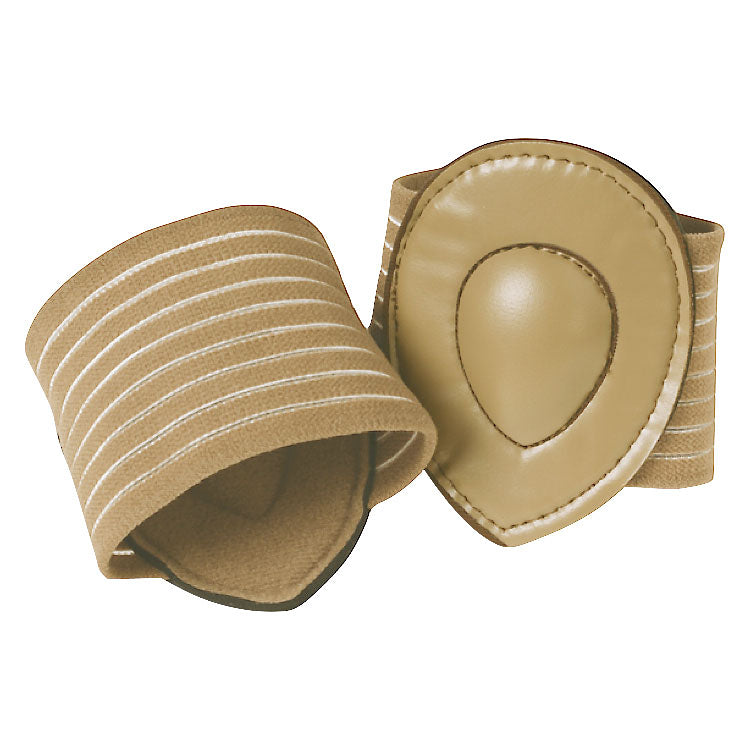
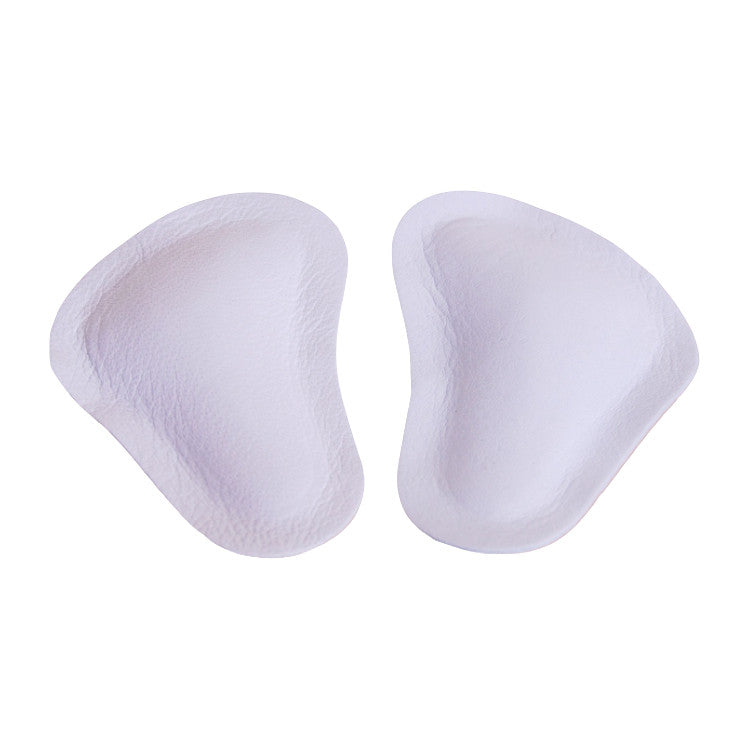
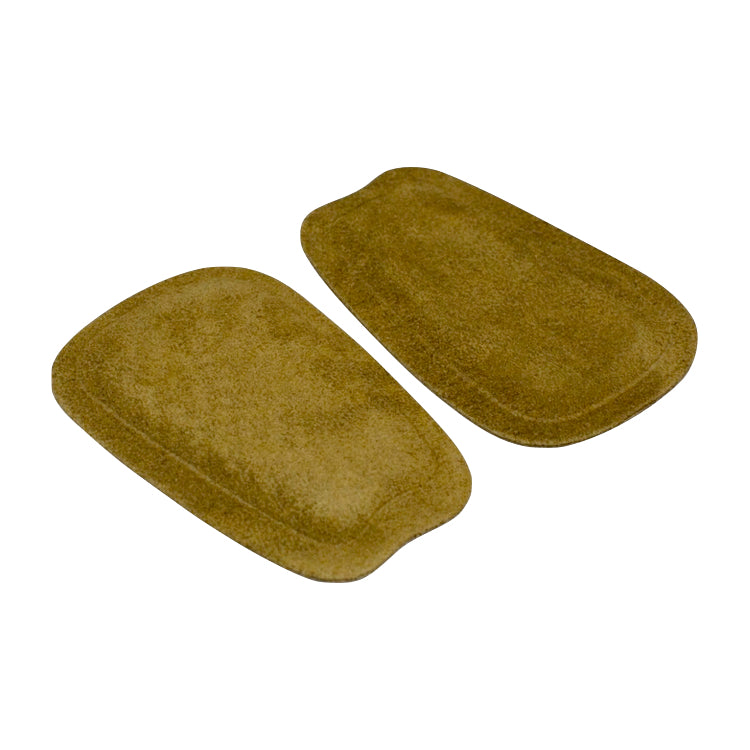
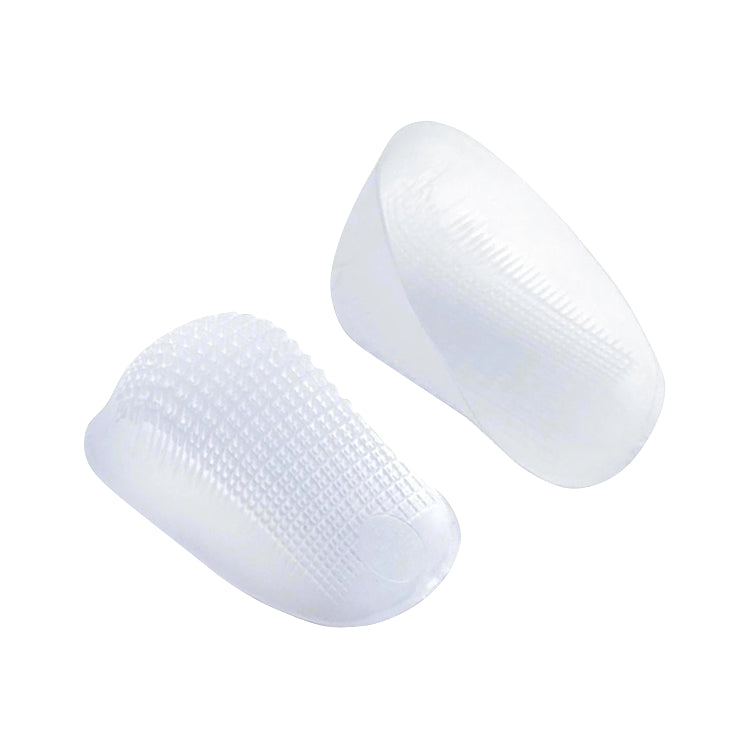
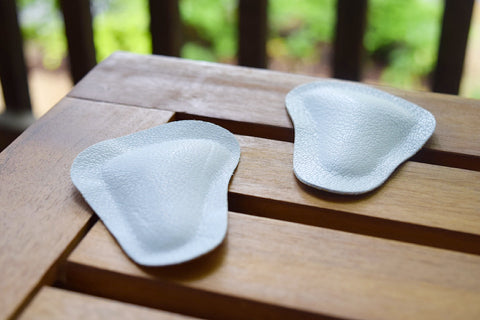
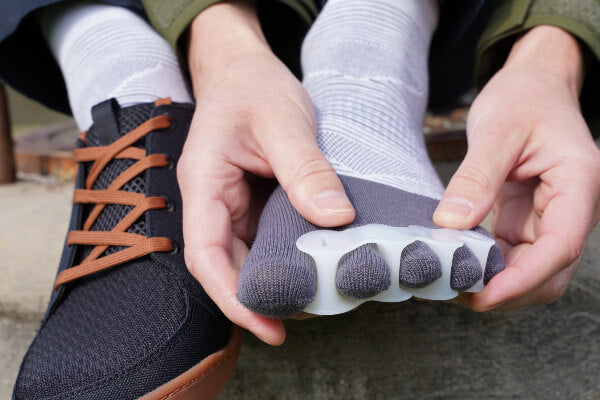
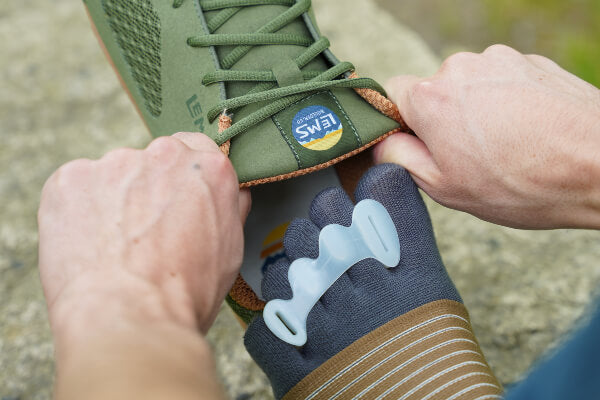
I was just wondering what the difference is between the pro and rx? Thank you
Hi, Joanne,
Thank you for your comment. The main difference is in the type of materials used. The materials that make up the Rx are slightly more durable than the materials that make up the Pro. Both options are great, however.
Kind regards,
Marty Hughes, DC
Hi,
I am wondering what the difference is between this and a metatarsal pad? Is this like a reusable metatarsal pad? Seems like it’s marketed as an arch support of some kind?
Moreover, if it truly functions like a metatarsal pad, it looks like the pad sits way below the ball of the feet to give the benefit for the transverse arch. Thank you for your help.
Hi, Frank,
Thank you for your questions. There are two main types of metatarsal pads: Stationary and mobile. Stationary metatarsal pads, such as Pedag metatarsal pads (www.naturalfootgear.com/collections/foot-pads/products/pedag-metatarsal-pads), have an adhesive backing and are permanently fixed inside your shoes, whereas mobile metatarsal pads can be worn on your bare feet, over your socks, or within any of your shoes or boots.
Both types of metatarsal pads are positioned just behind the ball of your foot and function in the same way to help spread your transverse arch. The type of metatarsal pad you use is simply a matter of personal preference.
Though the Strutz packaging and literature talks about the product offering medial longitudinal “arch support,” we believe that this product, by its very nature, functions best as a metatarsal pad. It does “support” the foot’s transverse arch in that it helps spread out the bones that make up that arch, creating more space for the nerves and blood vessels that pass through this very sensitive part of the foot.
I recommend checking out this article to learn more about foot pads:
www.naturalfootgear.com/blogs/education/17914936-the-best-foot-pads
Also, this article discusses natural arch support and why conventional arch support is largely unnecessary for most people:
www.naturalfootgear.com/blogs/education/17920972-what-is-natural-arch-support
Here’s wishing you the best in foot health! Please let us know if you have any further questions.
Kind regards,
Laura Trentman
Hey! I was just wondering, do the Strutz foot pads help build back your arch if you’ve lost it?
Hey, Mike! In our experience, the best way to develop the inherent strength of your medial longitudinal arch is to return your big toe to its normal anatomical position (that is, in line with its corresponding metatarsal bone). This can be achieved through gentle stretching of your big toe, the use of Correct Toes toe spacers, and the use of footwear that’s widest at the ends of your toes.
Strutz foot pads help rehabilitate your foot by spreading your transverse foot arch, promoting proper forefoot foot pad positioning, and encouraging a healthy balance between your toe flexor and extensor tendons. Strutz foot pads can be used in combination with Correct Toes and foot-healthy footwear for synergistic foot health benefits.
This article offers a more comprehensive explanation of flat feet, including causes, symptoms, and possible solutions:
www.naturalfootgear.com/blogs/education/17882320-flat-feet
I hope this information has been helpful. If you have any other questions, please do let us know!
Kind regards,
Andrew Potter
Do the pads actually create an arch while wearing them in addition to Correct Toes?
Hi, Chris,
Thank you for your question! The purpose of the pads is not to create an arch, but rather, to help spread out the transverse foot arch to give the structures (e.g., nerves, blood vessels, etc.) passing between the metatarsal heads a bit more space in which to operate. Strutz pads also help bring the toes back down toward the ground, which can be helpful in addressing crooked toe problems such as hammertoe and mallet toe. Strutz foot pads also help reposition the forefoot fat pad to a position that cradles and supports the heads of the metatarsal bones.
It’s really the combination of Correct Toes and flat-soled, flexible footwear that helps build the main foot arch. I recommend checking out this article, which discusses the concept of natural arch support in greater detail:
www.naturalfootgear.com/blogs/education/17888744-natural-arch-support
I hope this info helps!
Kind regards,
Marty Hughes, DC
Hello. I’m a 68-year-old male in good health. I’ve had bunionette issues on both feet, to some extent, for two years. My left leg is 1/4" shorter than the right due to breaking my left tibia as a teenager. My left foot bunionette is much less severe, but it is there. The right foot is the main problem. I’ve been to two podiatrists and had two cortisone injections. Now surgery is recommended: breaking the bone and adding a screw. Not something I look forward to.
So I’m looking at alternatives. At this point, I cannot move my little toe on the right foot independently, and it bends inward towards my fourth toe. I’ve been wearing well-padded (Hoka) running shoes, at least in the summer. They have helped some. I’ve been wearing Correct Toes with toe socks for a couple weeks, and I’ve been working my foot muscles hard (trying to move my toes independently) as well. The pain (over and under the 5th metatarsophalangeal joint) was originally diagnosed as bursitis. I’ve been told by one podiatrist that I have some minimal arthritis there as well. I’ve had X-rays and an MRI. I may look into the low-rise shoes that you recommend. Would Strutz foot pads help? I realize that you are unable to offer medical advice, but I would appreciate any help you could offer.
Hi, Michael,
I’m sorry to hear about the foot issues you’ve been grappling with. It’s certainly possible that you’ll experience some good foot health gains by incorporating Strutz foot pads into your daily foot care routine, as they can help to realign a variety of crooked toes and just generally improve foot comfort. But, without being able to see your feet and assess them in person, it’s impossible to make any definitive statements on this front, and your best bet is to find a good local foot care provider who can offer you more nuanced and personalized care. You might consider checking out this article to get a sense of what questions to be asking prospective foot care practitioners:
www.naturalfootgear.com/blogs/popular-q-a/what-questions-should-i-be-asking-a-prospective-foot-care-provider
We’re here if any additional questions arise, so please don’t hesitate to reach out to us again!
Kind regards,
Marty Hughes, DC
Hello, I was wondering how long these are meant to be used? You mention in the article that it might take up to a month to get used to the pads, but once one gets used to them, how long are they meant to be worn?
Hi, Ana,
Thank you for your question. For most people, and for most sets of feet, there are compelling reasons to simply incorporate the pads into an ongoing daily foot care regimen. Many people who have worn conventional shoes for decades require years of rehabilitative foot therapy—part of which the pads provide—to restore optimal foot form and function. It’s certainly possible to use the pads for a shorter period (say, to help you reduce or eliminate ball of foot pain or problems), but the best long-term results come from using the pads on a consistent basis over the span of months and years.
I hope this helps answer your question!
Kind regards,
Marty Hughes, DC
Hi. I have an issue with just my left foot. Do I need to wear the Strutz Pro pads on both feet, or can I just use it on my left foot?
Greetings, Haitham,
That’s a great question! Thank you for posting it. We recommend that you wear Strutz foot pads on both feet, even if you currently have an issue on just one side. In general, it’s best for posture, balance, and overall musculoskeletal health to use the pads on both feet simultaneously, and there are other compelling reasons to use Strutz foot pads on the “uninvolved” foot as well, all of which are outlined in this blog post:
www.naturalfootgear.com/blogs/educational-articles/metatarsal-pad-benefits
Please let me know if you have any follow-up questions!
Kind regards,
Marty Hughes, DC
Hello. I have had moderate bunions all my life and no foot pain. Two years after switching to minimalist shoes, I have developed calluses under my 2nd metatarsal heads, which come back after removal. My feet seem relatively strong and mobile despite my bunions. Would a metatarsal pad help me realign my arch and prevent callus formation in the future?
Hi, Tiffany,
Thank you for your question. It’s great to hear that your feet are strong and mobile despite having bunions! A metatarsal pad could indeed help with those calluses by redistributing pressure away from the affected area. It could also help with realigning your forefoot a bit. However, if the callus is recurring, it may be a sign that the shoe fit or the way pressure is distributed could still need adjustment. You may want to explore different footwear options or consider consulting with a foot care professional to get a personalized recommendation.
Kind regards,
Marty Hughes, DC
Have you found that people have success using Strutz foot pads while running? Do they stay in place during activities like running and hiking?
Hi, Brandon,
Thank you for your comment. It’s been our experience that Strutz foot pads do stay in place during dynamic activities like running and hiking, and a lot of people have benefited from using this mobile metatarsal pad during their athletic pursuits. You may want to experiment with these pads, though, to see how they feel on your feet during your runs or hikes.
Kind regards,
Marty Hughes, DC